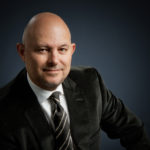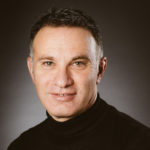
Mohamed I Fayad
Cracking the crack teeth code utilizing CBCT imaging: A New Perspectives on Diagnosis, CBCT Imaging, Treatment Strategies, and Outcomes.
A lack of consensus exists among dentists and endodontists in cracked teeth. Accurate clinical evaluation, imaging and diagnosis is paramount to properly treatment planning cracked teeth. With the resurgence of the philosophy of saving compromised teeth over extraction, and our patients’ desire to save their teeth, the question remains: “Which cracked teeth should be treated and which cracked teeth should be extracted?” Applying the current understanding of the ultrastructure of teeth in conjunction with modern diagnostic technologies, materials, adhesive techniques, and restorative approaches, dentists can now use minimally invasive biomimetic techniques to provide restorations that come close to functionally and biomechanically mimicking the original, healthy state of a tooth.
This evidence-based presentation will address the classification and diagnosis of different types of cracks and the role of CBCT imaging in these cases, as well as the prognosis and changes in treatment protocols and outcomes of cracked teeth.
Learning Objectives:
1. Understand the different types and prognosis of longitudinal tooth fractures.
2. Understand the role of CBCT imaging in identifying cracked tooth types, extent of the fractures, and early bone pattern changes associated with cracked teeth.
3. Understand prognosis and outcomes studies related to treatment and management of cracked teeth and vertical root fractures.
4. Applying the current understanding of the ultrastructure of teeth in conjunction with modern diagnostic technologies, materials, adhesive techniques, and restorative approaches for restoration of cracked teeth.
Biography
Dr. Fayad received his DDS in 1985 from the Collage of Dentistry, Cairo University. Dr. Fayad received his Master’s in Oral Sciences in 1994 from the University of Buffalo at NewYork. He received his PhD in 1996 as a joint supervision between University of Buffalo at New York and Cairo University. He received his Endodontic training at the college of Dentistry at UIC. Currently he is the director of endodontic research, and a clinical associate professor in the Endodontic department at College of Dentistry at UIC, dividing his time between teaching, research, intra-and extra-mural continuing education and private practice. He currently serves on the Scientific Advisory and Manuscript Review Panels of the Journal of Endodontics, and Evidence Based Endodontics Journal. He served on the AAE Research and Scientific Affairs Committee and co-chaired AAE/AAOMR committee drafting the joint position statement on CBCT (2015). He has numerous publications and chapters in peer reviewed journals and textbooks (Pathways of the pulp) and (Contemporary surgical Endodontics). He is the co-editor of the CBCT text book (3-D Imaging in Endodontics: A new Era in diagnosis and treatment) by Springer (2016). He is a Diplomate of the American Board of Endodontics and gave numerous presentations nationally and internationally.

Hagay Shemesh
Root fractures: scientific research and controversies
The clinical diagnosis and definitions of root fractures, cracks and dentinal defects are controversial. Further confusion is caused by the guidelines and definitions of the AAE and ESE. These difficulties will be presented focusing on modern methodologies and their reliability in diagnosing root fractures.
The causes for root fractures will be discussed as well as research methodologies recent findings. Prevention and eventual treatment of root fractures as well as the prognosis will be presented , focusing on treatment options, alternatives and patient/disease centered outcomes.
Biography- Hagay Shemesh
Hagay was born and raised in Tel Aviv, Israel and graduated the dental faculty in Jerusalem, Israel in 1990. He graduated from the post-graduate endodontic program in Jerusalem in 2000 and then immigrated to the Netherlands and started teaching the undergraduate endodontic course at the Academic Centre for dentistry Amsterdam (ACTA). He then started his PhD project and graduated in 2009 cum laude from the University of Amsterdam defending his PhD thesis “new insights into the root canal wall”. He is now chair of the division of endodontics in ACTA , program director of the only post graduate endodontology program in the Netherlands, and is a member of the scientific referee board of the Journal of Endodontics. He also works in a private practice limited to endodontics in Amsterdam.
Gianluca Plotino
Access cavity design and scientific research
Abstract
Clinical studies demonstrate that long term prognosis of the root filled teeth is influenced by the quality of the restoration as well as by the quality of the root canal treatment itself. The most recent trends in restoration of endodontically treated teeth are following the concept of minimally invasive dentistry, proposing more conservative, less expensive and bio-economic restorations, based mostly on adhesive dentistry and the introduction of new materials and technologies. Following these trends, the access procedures in endodontics and the root canal preparation are changing in a conservative way, sometimes drastically if compared with the traditional concepts of cavity outline opening and coronal straight-line access to reach the apical region. Endodontic literature appears to be poor on demonstrating how these minimal invasive access procedures can influence the quality and prognosis of root canal treatment. The present lecture will analyze the technical procedures of minimal invasive access in different clinical situations and the possible mechanical improvements derived from it. Moreover, the limits of these procedures will be critically analysed to define how much minimal invasive clinicians should be in order to ensure “gold standard” endodontic treatments.
AIMS AND OBJECTIVES
At conclusion, participants should be able to:
• Describe the basic concepts of access cavity preparation.
• Perform new strategies to optimize access cavity preparation.
• Evaluate critically the advantages and disadvantages of present
technologies, instruments and techniques.
Biography
Gianluca Plotino was born in 1978 in Rome, Italy. He graduated in dentistry from the Catholic University of Sacred Heart of Rome in 2002. He received the “Alfred Bean Memorial” prize from the Chicago Dental Society for the best Italian research graduate thesis 2001-2003, the “Hans Genet Award” from the European Society of Endodontology for the best European Researcher in 2013 and several other research prizes. He became Assistant Professor of Endodontics in the School of Dentistry at the Catholic University of Rome spending his time teaching, giving lectures and partecipating in the faculty practice. Dr. Plotino was Professor of Endodontics in the School of Dental Hygiene from 2005 to 2008 at the Catholic University of Rome where he obtained his PhD in 2009. From 2009 he is working in the Department of Endodontics at the “Sapienza” – University of Rome as Senior Lecturer and Professor of Scientific English in the School of Dental Hygiene until 2017. In 2017 he received the certification to be Professor of II level and in 2018 to be Professor of I level. Gianluca Plotino is a certified member of the European Society of Endodontology (ESE), International Member of the American Association of Endodontists (AAE), active member of the Italian Society of Conservative Dentistry (SIDOC), the Italian Academy of Endodontics (AIE) and the Italian Society of Endodontics (SIE). Dr. Plotino published more that 90 articles in scientific peer-reviewed journals on different endodontic and restorative topics, 2 books and contributed with numerous chapters in textbooks. He is Associate Editor of the European Endodontic Journal and the Italian Journal of Endodontics and part of the Editorial Board of several other journals. Dr. Plotino owns two patents, has given several lectures, courses and hands-on courses worldwide and works in his own private practice limited to endodontics and restorative dentistry in Rome, Italy.

Daniel Cerny
Restoration of the root-filled tooth
Restoration of the root-filled tooth is by many sources more important than the endodontic treatment itself. Tooth with previous damage to its structure, most likely still containing some bacteria, weakened by endodontic treatment mechanically and chemically is a challenging target. Not that long time ago, the only way to preserve such a tooth was cast-post followed by a crown. Along the process of making such a restoration, more tissue was lost – again. Subsequently several new options have been introduced during the past 30 years allowing for more conservative and aesthetic approach to the root-filled teeth. Author describes its 14 year path for adhesive, aesthetic post-endodontic treatment. Along the way, nearly 7000 root-filled teeth have been treated following our protocol.
Philosophically, there are 4 important principles we follow in our daily journey:
Tissue preservation
Replace with similar
Adhesion
Fail-safe
All of the above is exclusively handled by endodontists in our practice.
Theoretical and clinical background, progress explanation, clinical protocol, retrospective statistics and many case reports will be presented.
Biography
Daniel Cerny received his dental degree at the Charles University, Medical School in Hradec Kralove, Czech Republic (1998). His doctorate degree was gained at the Palacky University in Olomouc in 2018 on the topic of adhesive post-endodontic treatment. He is a part-time faculty member at Palacky University Olomouc (since 2019) and previously an assistant professor at Charles University in the Department of Conservative Dentistry and Endodontics (1998-2007). He has worked in a Private Practice in Hradec Kralove, limited to adhesive dentistry and endodontics, since 2001.
President of the Czech Endodontic Association (CES) since 2015. Co-founder and the first president of Czech Academy of Dental Esthetics (CADE) (2007-2009). Editorial board member of the LKS journal (Czech Dental Chamber Journal) (2009-2013).
Co-owner and CEO of the continuing education institute HDVI since 2010. Co-founder of the Dental Summit Congress in Prague (since 2011). Author/co-author of 35 articles in dental journals. Co-author of four chapters in dental books. Lectures widely internationally.